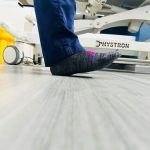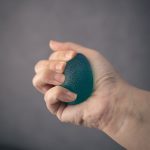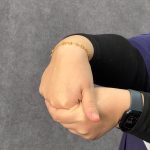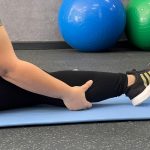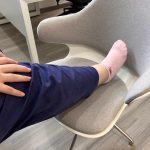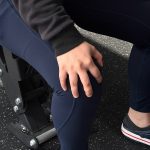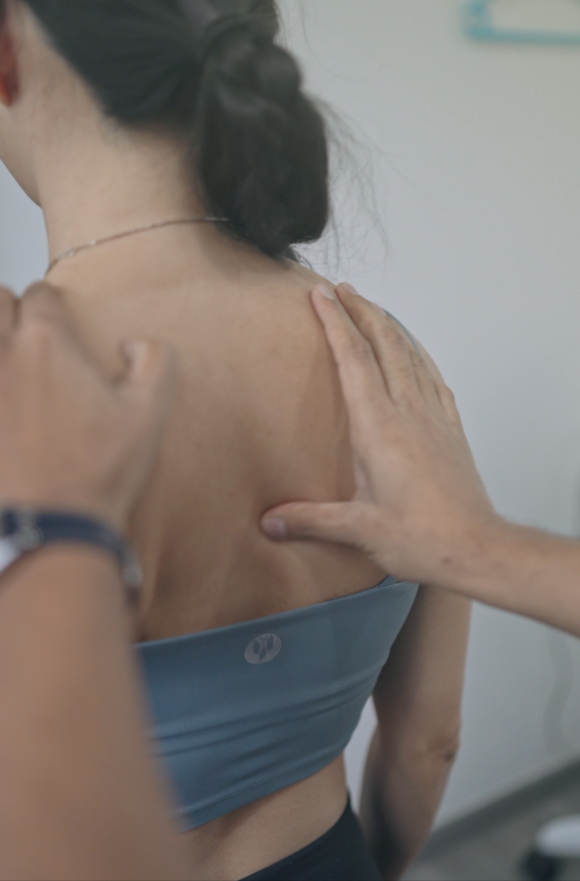
Health Blog | 3 MIN READ
Scoliosis
Dr. Krushna
Overview
Scoliosis is an abnormal curvature or twisting of the spine making the spine appear as an S or C shape. It is diagnosed when the curvature measures 10 degrees or more. Your ribs are attached to your spine, meaning this curve raises your ribs creating a “rib hump” and uneven shoulders or hips.
Curves in the middle of the back may be 45°-50°, curves greater than 70 can affect one’s breathing. Both curves on the upper and lower back may potentially increase with time.
Understanding the Spine
The spine is made of a stack of small rectangular bones called the vertebrae that are the building blocks of the spine providing stability and movement. Our spine curves naturally in the cervical spine, thoracic spine and the lumbar spine.
The existing curves of the spine are made to evenly distribute body weight, maintain balance and manage the stress of daily activities. Abnormal curvature results in imbalance, as our bodies and mind works on detecting imbalances without visual cues, meaning, the body’s spine is asymmetrical it will affect the center of gravity, balance, equilibrium and proprioception.

Scoliosis Diagnosis and Types
Generally, scoliosis is confirmed via medical imaging such as X-rays, CT scan, spinal radiograph or MRI. Any curvature that is 10 degrees or more is positively classified as scoliosis. Curves 25 to 30 degrees are significant and curves exceeding 40 are severe, requiring aggressive treatment.
An alternative testing used in pediatrics is called the Adam's Forward Bend Test. Physicians diagnose scoliosis based on any asymmetry, bump or imbalance. It is less detailed and can not entail the severity or degree of the curve but is a simple initial test anyone can perform.
Idiopathic
The most common kind of scoliosis affects roughly 80% of cases. Its causes are unknown (may be genetic) not direct cause of diet, posture or physical activity. It has shown to commonly affect patients in their late childhood.
Congenital
A scoliosis present at birth or young infants where the spine is curved sideways. It is a result of deformed vertebrae or ribs that may be caused by a variety of development factors.
Neuromuscular
One of the serious cases of scoliosis that is linked to nervous or muscular systems such as cerebral palsy, spina bifida, and spinal cord injury. These conditions affect muscular strength and spinal development.
Degenerative
As the name suggests, this scoliosis is age related, generally affecting those 65 and over. It is caused by the wear and tear of the bones as the spine naturally degenerate with age.
Scoliosis Symptoms
● Uneven Shoulders, Waist, or Hips
● Imbalanced Shoulder Blades or Ribs with One Side Sticking Out
● Clothes Fit Improperly
● Head Is Not Centered With Body
● Asymmetrical Shoulders When Bending Forward
Causes
More than 80% of the cases are “idiopathic scoliosis” meaning the direct cause of unknown. There is no hard evidence that suggests diet, posture, or physical activity play a role. Neuromuscular scoliosis is caused by poor muscle weakness or paralysis and neurological issues associated with cerebral palsy, spina bifida, muscular dystrophy and paralytic conditions, such as polio or spinal cord injury. Degenerative scoliosis is caused by the natural degeneration of the bones with age. Other causes include:
■ Birth Defects
■ Genetic Conditions.
■Tumors.
■ Infections
Living With Scoliosis
■ Stretching Exercises for Scoliosis. When patients work on lengthening the muscles on the tight side of their curve it can relieve pain and pressure.
1. latissimus dorsi stretch
Taking deep breaths, holding it for 10 seconds and repeating with the other side.
2. Pelvic Tilt Stretch (Especially Effective For Lumbar Scoliosis)
Pelvic exercises to realign your pelvis and relieve tightness. Patients should lay on the floor with their knees bent, then tighten their abdomen and raise their hips and hold. After 10 seconds slowly return to the initial position.
Strengthening Exercises for scoliosis. Your practitioner may add core strengthening exercise to your routine to control the weak side, if the back muscles are too weak they can not properly handle the weight. Any core strength and proprioception training is beneficial for a scoliosis patient
3. Planks and abdominal press
Patients should bend their knees, maintain the pressure for 10 seconds, then relax. They can repeat this as 10 reps twice. their knees bent, then tighten their abdomen and raise their hips and hold. After 10 seconds slowly return to the initial position.
Scoliosis Treatment
Your physiotherapist will identify the type, the size of your curve and take your age and history into consideration. Next, they will monitor your curve and relative other medical conditions.
Physical therapy is a great non-invasive option with little to no risks. You will be working along with your physiotherapist to control your scoliosis.
1. Stretching and Strengthening the Back Muscles
Part of your rehabilitation will be performing exercises for posture correction and control.
2. Optimal Ergonomics
Your physiotherapist will teach you the best body mechanisms based on your kind of scoliosis. How to sit and how to lie down in a healthy way.
3. Stabilizing the Spine
This involves maintaining the natural curves of the spine whilst not allowing for the abnormal spine to worsen.
4. Spinal Manipulation / Decompression
Where a physiotherapist manipulates the joints to relieve pinched nerves, stiffness and to assist in postural correction.
Beneficial Results of Therapy
● Minimize The Need Of A Back Brace ● Improved Posture ● Decreased Stress On The Spine ● Better Breathing And Balance ● Slow Or Stop The Curve From Increasing
Acupuncture Therapy
Many patients experience musculoskeletal pain due to imbalances and postural asymmetry that are the result of spinal curvature. Acupuncture therapy treats this pain and restores movement and function.
Deep Tissue Massages
Scoliosis massages are mainly for pain relief and relaxation. This relaxation response is an effective option to loosen tight muscles and relieve discomfort. The massage can also induce mechanical responses such as increasing blood circulation, returning the connective tissue, tendons and ligaments.
For serious cases, surgery may be operated. No matter how your doctor decides to treat your scoliosis, do not let it stop you from being active, confident and doing what you love.
What You Need To Know ● Early treatment is the best for scoliosis. ● Scoliosis is commonly diagnosed in children but monitoring may be lifelong. ● Scoliosis generally does not cause pain. ● Common signs of scoliosis are differences in shoulder, hip or pelvic height. ● Bracing is common, however, in serious cases surgery is required. ● Physical therapy is recommended even after surgery.

